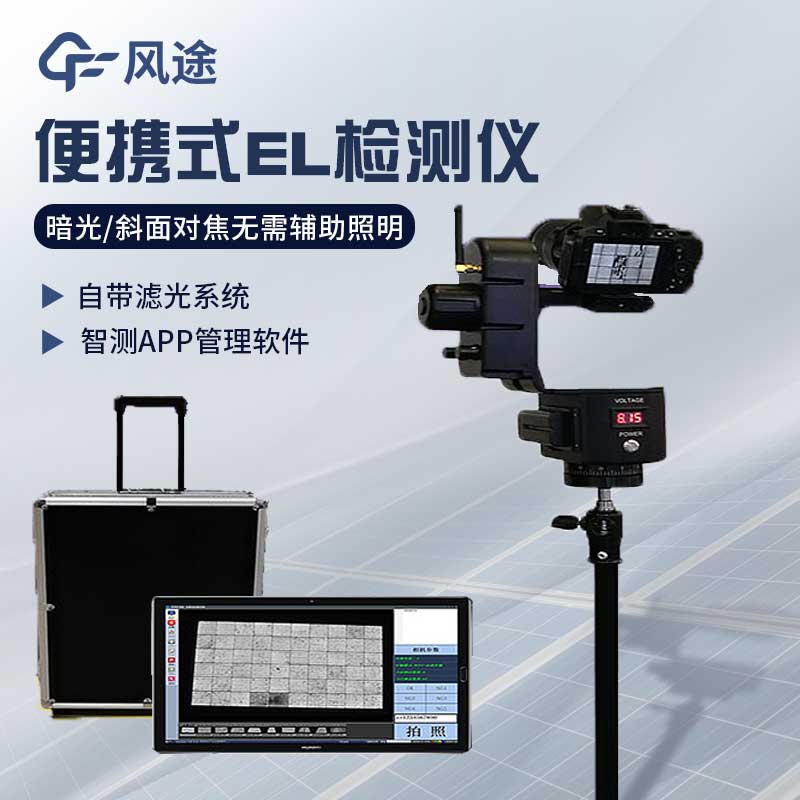Meteorological environment monitoring equipment supplier
Insist on doing high-precision customer favorite technology products
In the current booming photovoltaic industry, how to ensure the performance and quality of photovoltaic panels? This requires a series of professional testing equipment.
The EL Detector works based on the principle of electroluminescence. When a forward bias voltage is applied to a photovoltaic cell, the recombination of electrons and holes in the cell releases photons, causing the cell to emit light, and a high-resolution camera captures the luminescence. If there are problems such as cracks, microcracks, impurities, or short circuits in the cell, there will be abnormal dark areas or black spots in the luminescence. In contrast, highly efficient and defect-free cells emit uniform and bright light. In the production process of photovoltaic modules, it can detect problems such as welding microcracks in cells, ensuring the long-term stability and power generation efficiency of the product. Even for installed outdoor photovoltaic panels, it can be used for regular monitoring of internal damage.
The PV Inverter Test Equipment evaluates the performance of the inverter by measuring its input and output parameters. High-precision voltage and current sensors are used to collect data such as the DC input voltage, current, and the AC output voltage, current, frequency, and power factor of the inverter, and the data is analyzed with an internal algorithm. As a key device in the photovoltaic system, the inverter is responsible for converting DC power into AC power. Its conversion efficiency, the quality of the output AC power, and its protection functions are all related to the safe and stable operation of the entire system. This tester can ensure that the inverter meets all requirements.
The PV Weather Station consists of various meteorological sensors. The solar radiation sensor (thermopile or photoelectric type) measures solar irradiance, the wind speed sensor (three-cup or ultrasonic type) measures wind speed, the wind direction sensor determines the wind direction, and the temperature and humidity sensors (based on thermistor or capacitive principles) collect air temperature and humidity respectively. The data is aggregated and processed by a collector. These meteorological data can be used to evaluate the performance of photovoltaic panels and predict power generation.
From the above, it can be seen that equipment such as the EL Detector, PV Inverter Test Equipment, and PV Weather Station ensures the performance and quality testing of photovoltaic panels from different aspects, provides strong support for the stable development of the photovoltaic industry, and helps to improve the power generation efficiency, reliability, and service life of photovoltaic systems.
